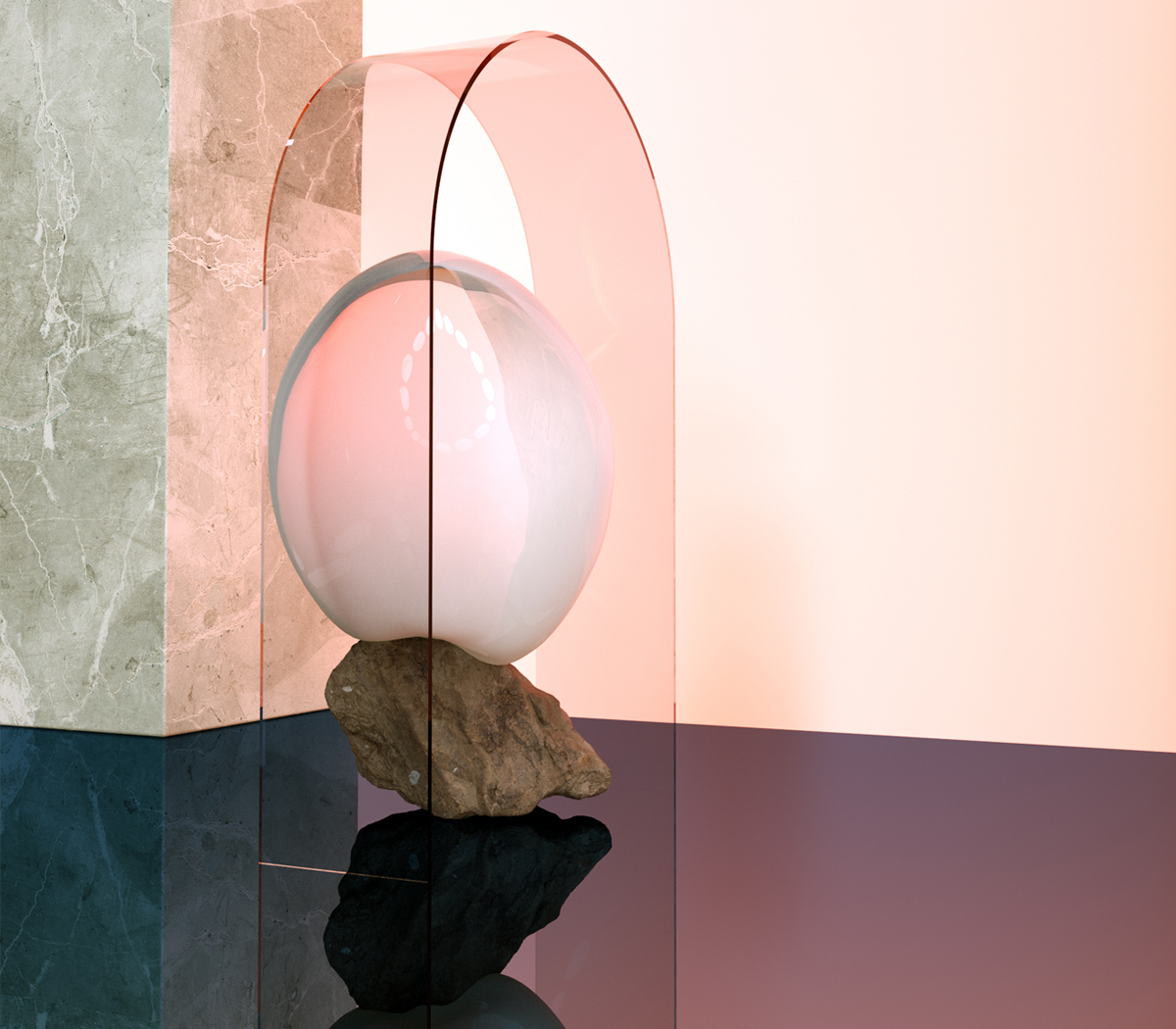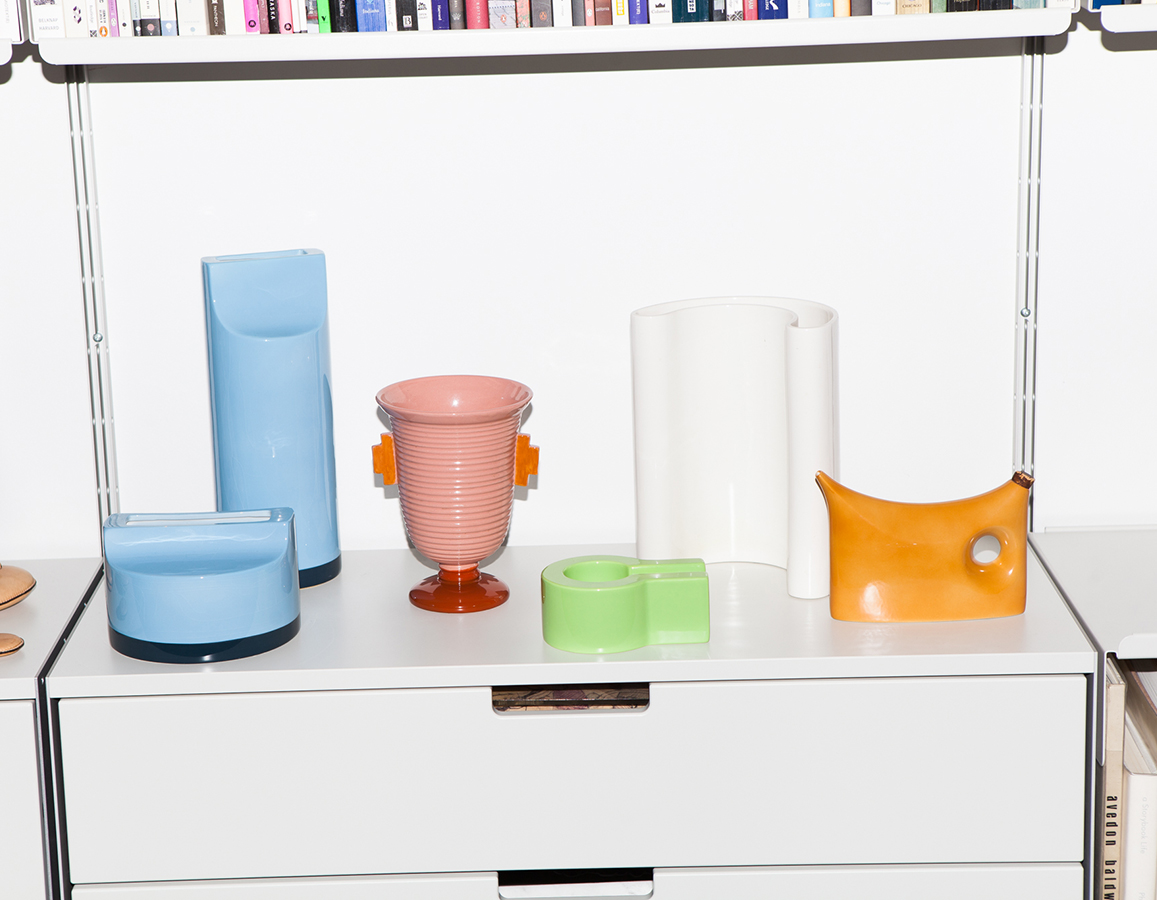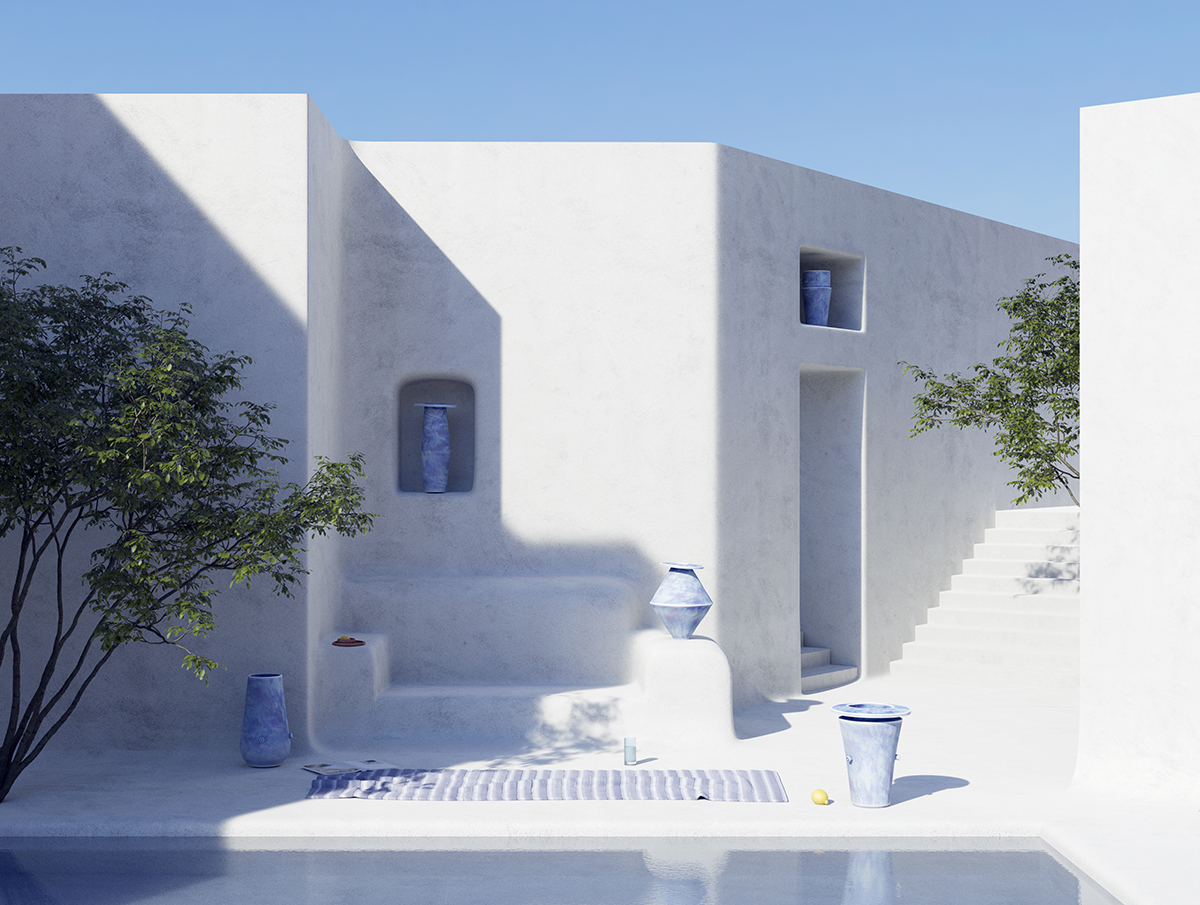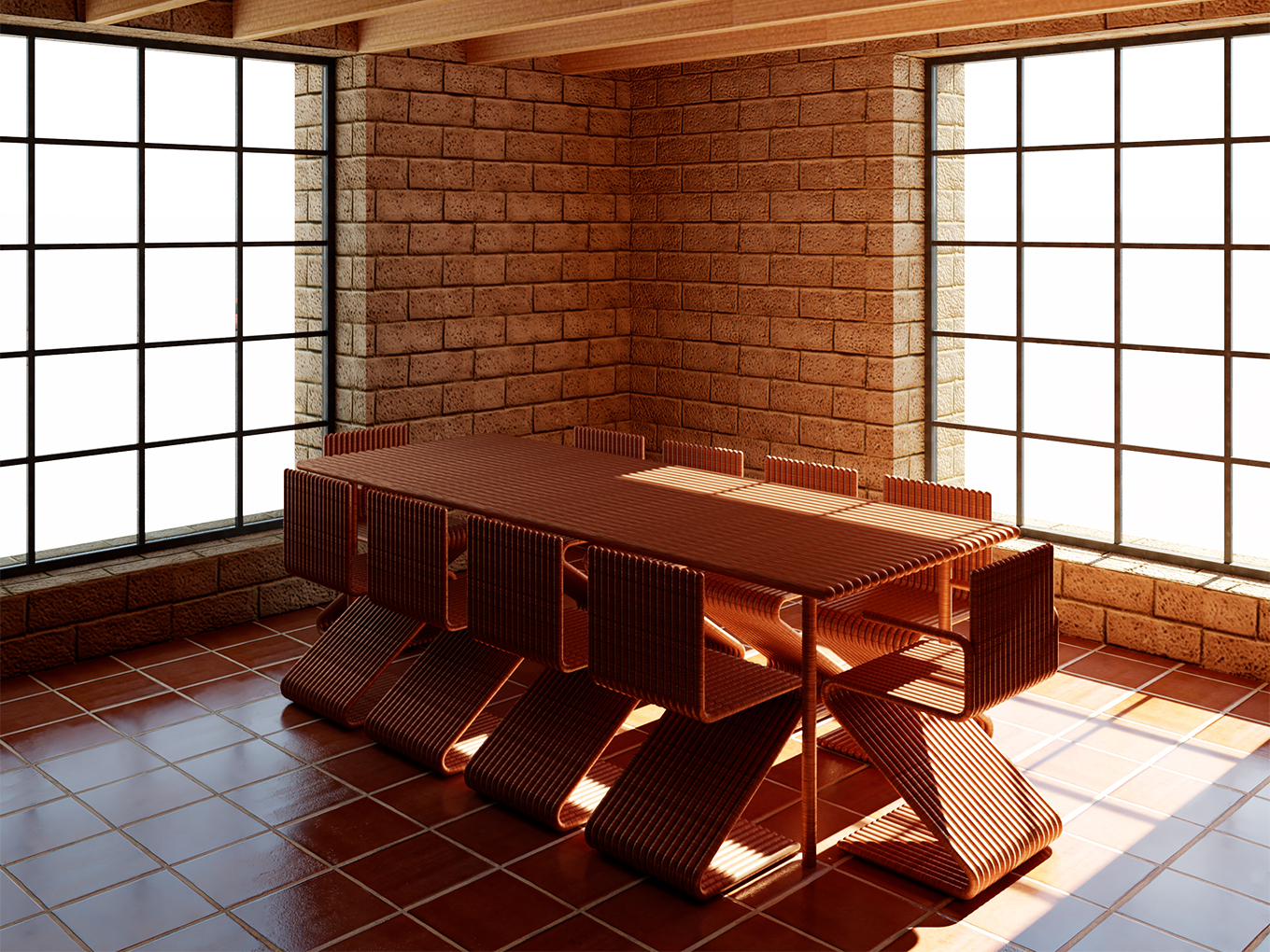
06.12.20
Sight Unseen OFFSITE
Lland’s New Copper Furniture is Meant to Age in Place, Because “Nothing is Perfect”
This piece is part of Sight Unseen’s 2020 Offsite Offline coverage. To view Lland’s virtual booth on Offsite Online, click here.
Earlier this spring, Rachel Shillander was ready to move into a house with a garage, an “ideal situation” where she could live with her work — but then the pandemic happened, and now the whole of her studio is in storage. The founder of Lland, a Los Angeles–based studio that straddles art and design, Shillander is nothing if not up for a challenge. Her copper Pipe Collection, debuting as renderings for Offsite Online, is made entirely of the lightweight alloy, in tribute to its quickly fading functional life as plumbing infrastructure in older homes, now often replaced by composite plastic tubing. The entire collection, which will eventually be available in a range of metals, is meant to “age in place,” making external what was once an unseen process. “I do respect that some people want it to stay new, but it’s meant to take on the characteristics of its home and its people,” says Shillander. “Nothing is perfect.” Here, we talk through the inspirations behind and challenges presented by her designs.
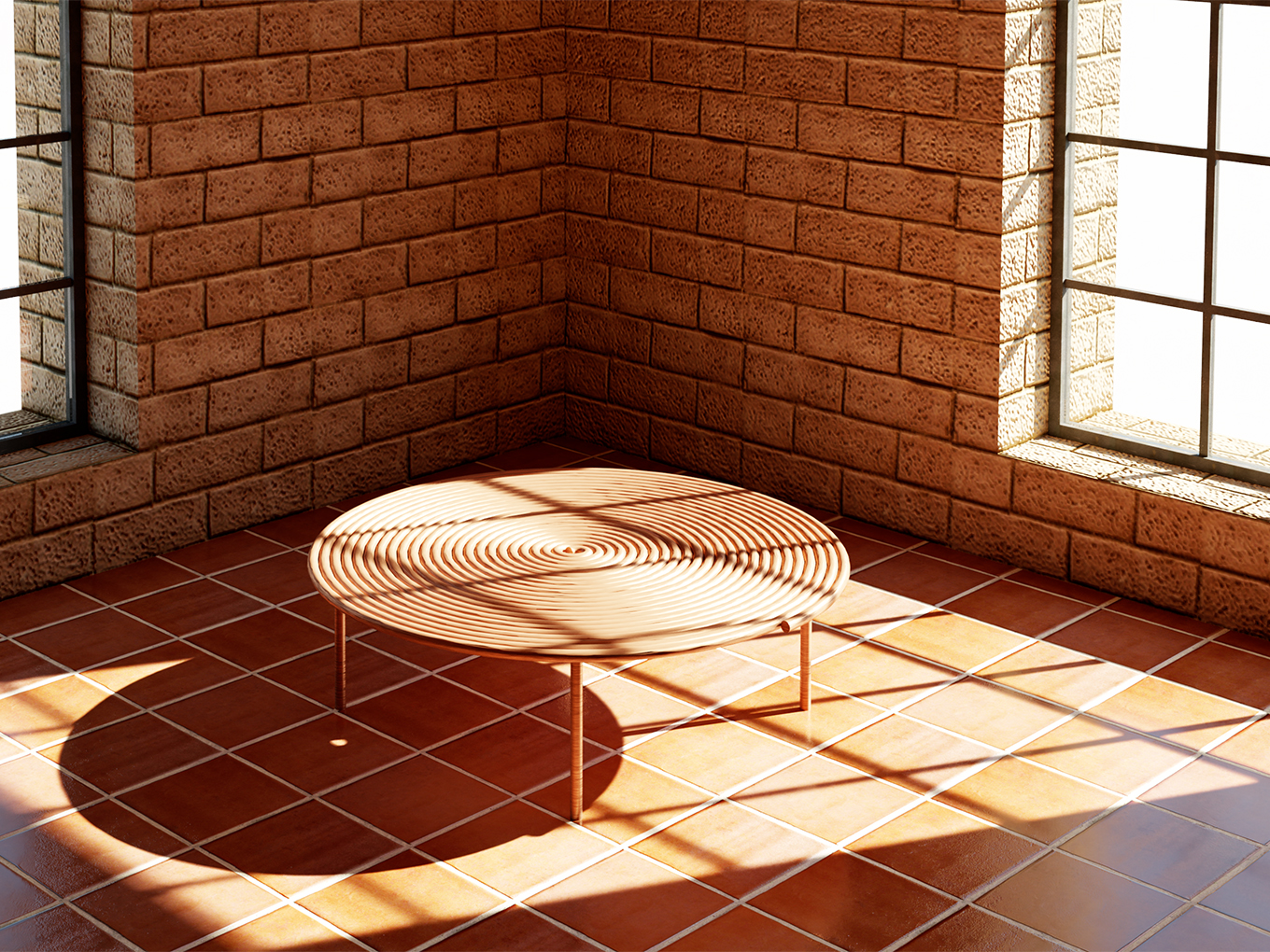
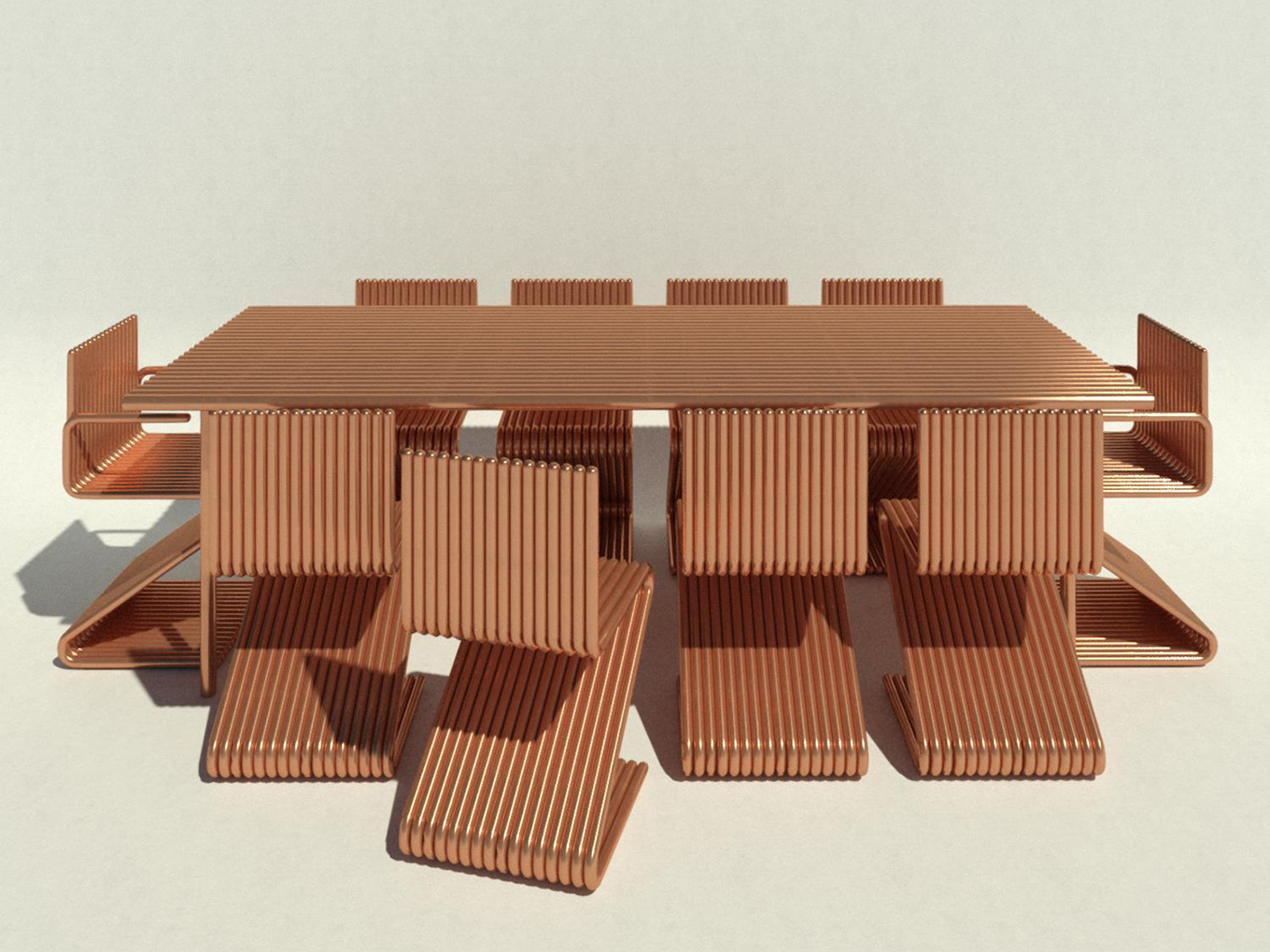
Tell me about the starting point for this collection.
This collection started with my copper lamps. I don’t work in metal usually, and when I made those lamps I had to find finial fabricators to work on them. I also had to find metal benders for this collection. I worked for an artist a decade ago doing a wire bending project. We had reached out to a bunch of wire benders and I thought CNC tube-bending was the coolest fabrication process. Part of the reason the pieces look the way that they do is because I was really interested in using that fabrication method. You can put copper plumbing together at right angles with fittings, but I really liked the idea that it would be tube-bent into these forms.
Do you have prototypes in any metal, currently?
Not yet. I have all the fabricators ready to go, I’m just waiting to pull the trigger on it. The first prototype’s gonna be the zigzag chair in raw steel.
Why the chair?
I’m not the type of person that reinvents the wheel. I like to use classical references. The zigzag chair is based on the Rietveld chair in plywood. I looked at that and I was like, actually it would make a lot of sense to bend it. I think it’s self-supporting and structural. So that was where the form came from.
So once the tubes are bent, how do you actually combine them together?
Each tube is bent and then drilled in probably four locations — bottom, diagonal, seat, top — and then a dowel is inserted and welded onto the ends, with a bead weld along the bottom back side. It’s be-doweled and soldered.
Be-doweled and soldered. Love that. And is the fabrication process for the tables markedly different?
The tables are actually impossible, which I’m pretty upset about. The only way it could be made is if it were coiled into a cone and then smashed flat. It just has to do with the way that the bending works. It can’t quite get a continuous wrap like that. I’m still going to produce [the tables], but they’re going to be concentric, rather than a coil. So it’ll be a series of hoops that get doweled and soldered together. Then the final hoop will get bent at a ninety-degree angle to become the leg. They’ll look like the renderings, but won’t be one continuous piece of copper.
I’m curious about these structures and how you worked with scale, especially since copper is such a light metal and these were all evolved from the lamp design. What was that process like?
This actually brings up another important aspect of my work. I’m getting my license as an architect, and being trained as an architect you are always in the back of your head aware of the structure of something: how it’s supported, how it stands under loads, what’ll happen if there’s an earthquake. So when you take an object — an object has to be self-supporting. So I’m very honest in the forms about them being self-supportive. The shape is usually something that doesn’t need anything other than its own geometry to stand up — like a cone. A cone isn’t gonna fall over. It’s a self-supporting structure. So a lot of my work is the simplest shapes that will support themselves. When I saw these copper cones I was like, I don’t have to do anything to it, I don’t have to solder a base on, I don’t have to add weight at the bottom. And also cones work with the shape of light, the way light comes out of a lightbulb — it was perfect. So that was the genesis of most of the shapes: simple, self-supporting geometries.
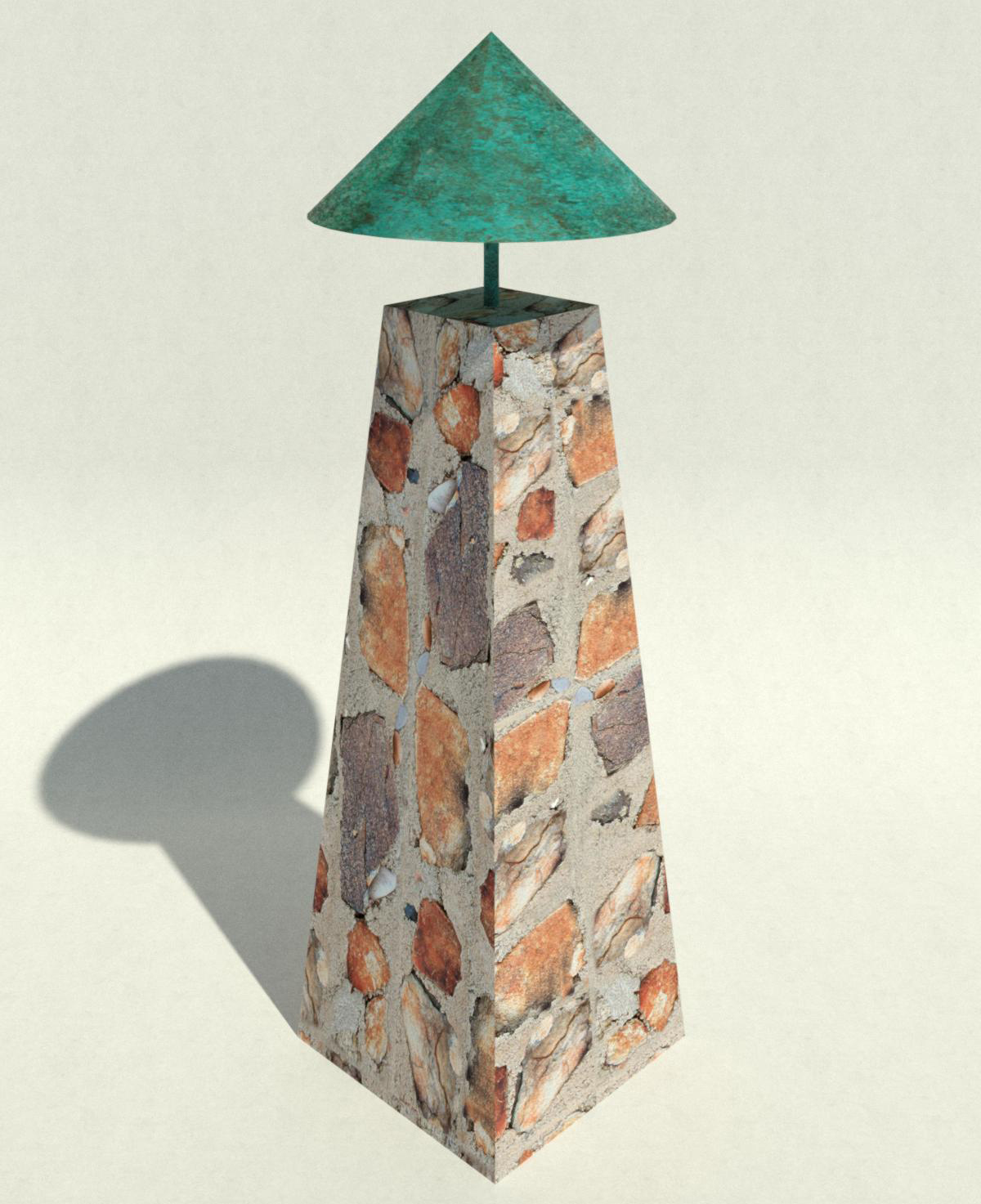
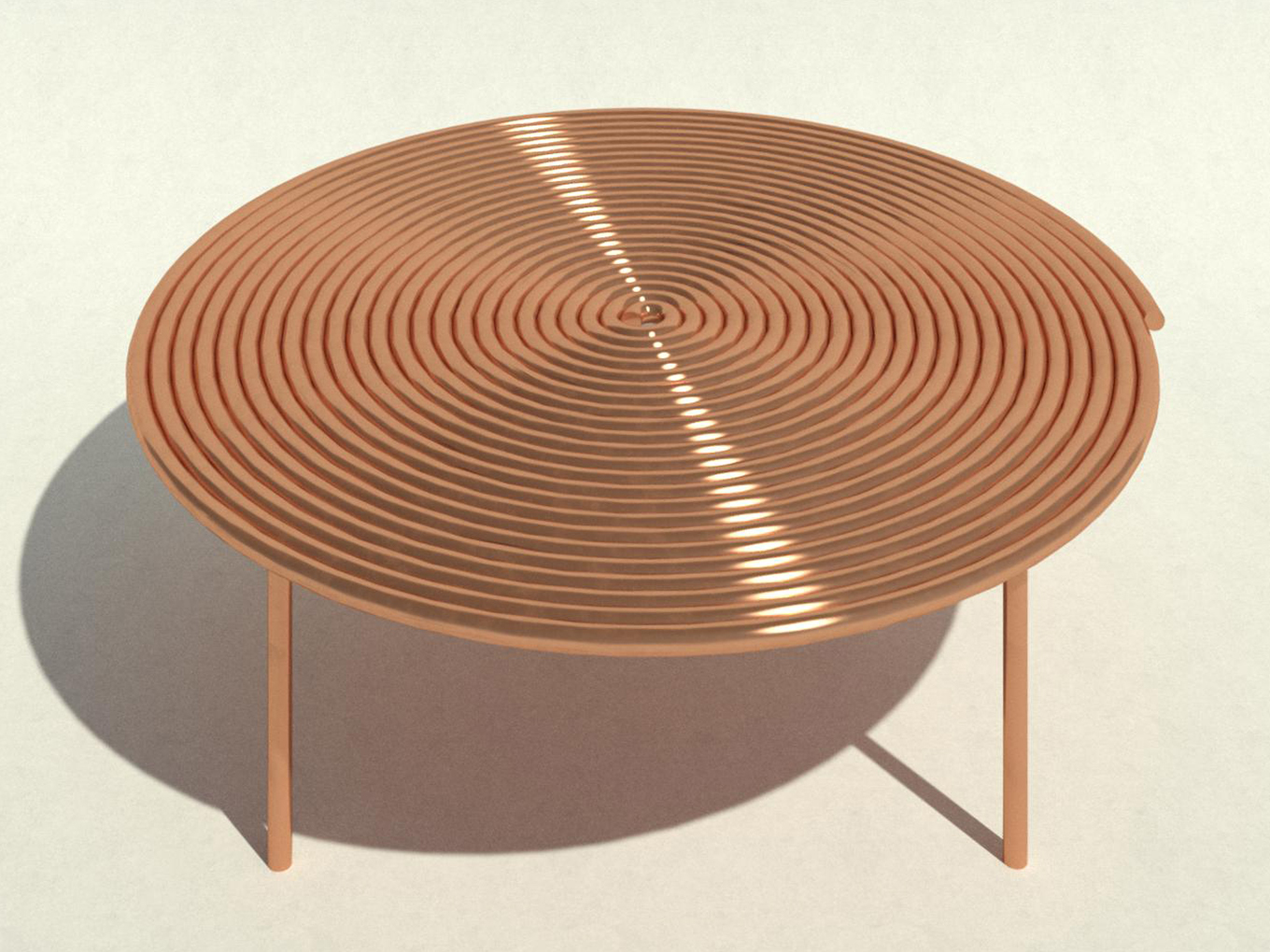
And in terms of time and your process—was this the most labor intensive thing you’ve done? Was it consistent with the time you’ve devoted to other collections?
[The time] is totally inconsistent. There are always a bunch of moving parts. Some of the work I make by hand and that process is really organic and slow. Like, I might just find a form that I want to cover in rocks, so I collect and source rocks and that process can take longer. Pieces like the chair — I was just sitting at my desk one day and a friend sent me an image, probably of a Rietveld chair, and I was like, huh, I’ve been really into copper and really wanting to work with tube benders. Within a few minutes I had rendered it off. The other pieces came from that: What does the coffee table that sits next to this chair look like? What is the coffee table that takes this bent copper form? And then the little spiral, I was like, that’s cool — it can be one continuous spiral that wraps around. It started with the zigzag chair and then was about figuring out the other pieces that fit within those same rules.
I’m interested in the virtual property where you’re hosting the collection. You talked a little bit about Frank Lloyd Wright’s Taliesin West and being inspired by the American Southwest. I’m curious what these place associations mean for your work?
Well, a majority of copper mines are located in southern Arizona and the property sort of reminds me of the barrio there — terracotta floors, steel windows — a lot of the buildings come from a similar material palette. I think it’s really fascinating that all materials have a place association, but we lose that when we pick it out from the ground and send it all over the world. It’s really hard for resources to be local any more, so I like the idea that people are aware of those place relationships, where things come from, and why they come from there. Copper is actually an ore that’s in rocks. You have to smelt the rocks to get the metal out. It’s a very toxic, difficult mining process. So I like to try and bring that level of awareness to materials and processes in my work. It’s important to me.
To make evident some of the things we take for granted.
For a while, when I was working on the stone lamps a few years back, people would actually send me photos of stone walls that they were seeing. I really loved that. Just people I know, or people who follow my work, sending me pictures of stone walls. It’s like — oh my gosh, they’re aware! They have awareness!
It’s interesting to highlight that kind of underpinning narrative that locates these materials for us, as consumers, because I think we take it for granted that they have origins. Especially now, because the processes of extraction are so obscured.
They definitely are. If you think about all the white marble and that shit that comes from Italy — there is a place in the world called Carrara! And it’s basically now just a quarry.
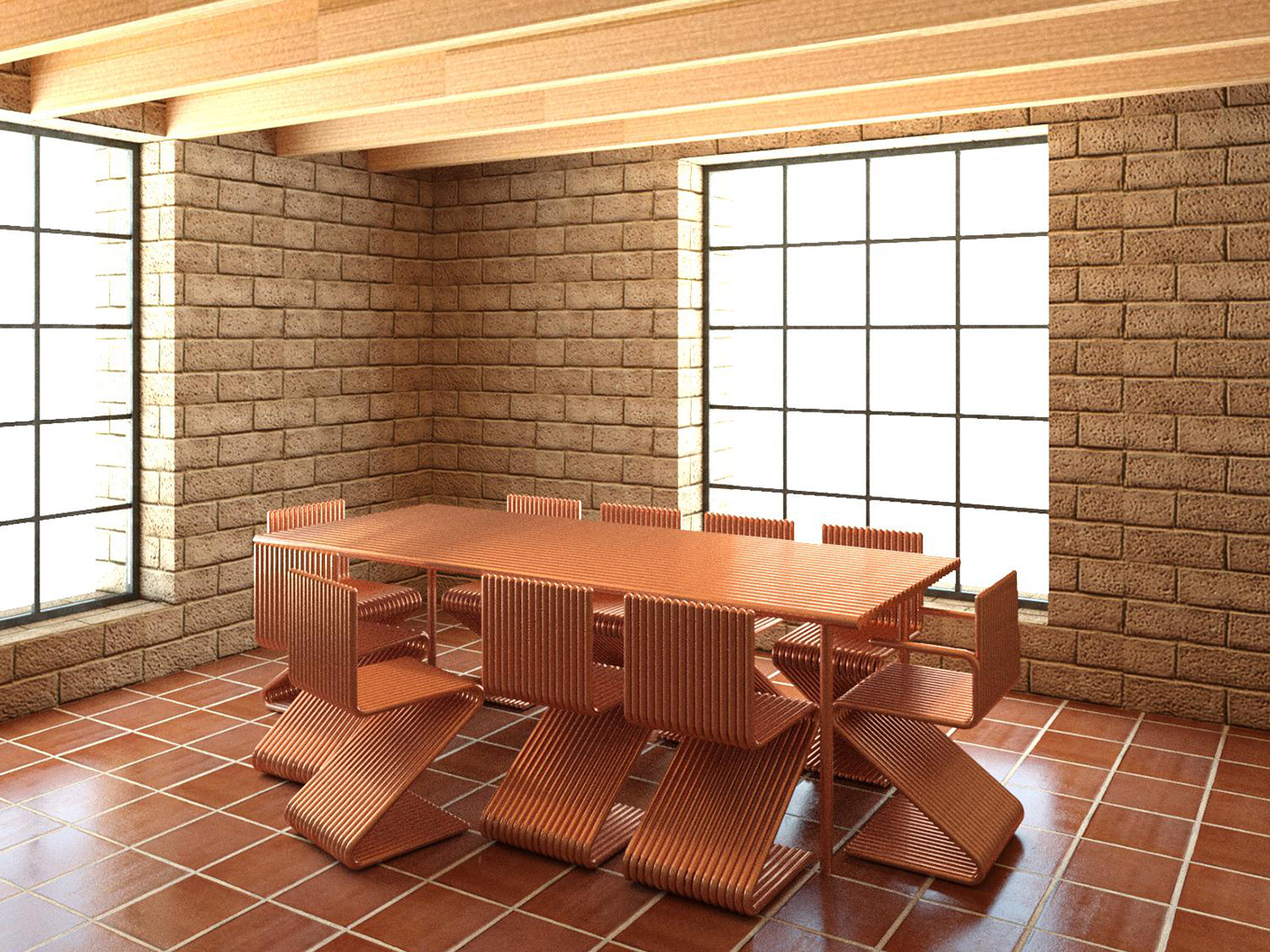
Do you work with local fabricators? Is that even possible?
The majority of finial fabricators are based on the East Coast, but I have a metal spinner out here. Metal spinning is the coolest. They take a sheet of metal and spin it really fast and then they poke it with this thing around a form. Sometimes, if you don’t understand a fabrication process, it’s really hard to communicate what you want and what you need. It also really influences what you’re making. I guess I work starting from the fabrication process. Before I went to visit my metal spinner I thought metal spinning was like, threads of metal. So when I went to the metal spinner I was like, oh that’s why you couldn’t do what I was asking you to do, because it doesn’t work that way.
How do you see this collection fitting into your larger body of work and what you do as a brand?
It’s super interesting that you ask that because one of the things that the pandemic has forced me to think about is my practice and what I want for the future — what my practice is doing for me and what it can do for others. It’s been a quarantine of clarity. One of the things I’ve come to realize is that I don’t want to be a “brand.” I think when you’re a brand you’re limited by expectations, and I really don’t want there to be expectations around my work. I want to make whatever I want, whenever I want, without it having to fit within my brand. If I’m just a studio then I can make things like a weird coiled copper tube collection that doesn’t necessarily fit with anything that I’ve done, but fits within the context of my interests and the materials and processes that I know, because I am who I am and have the profession that I have.
